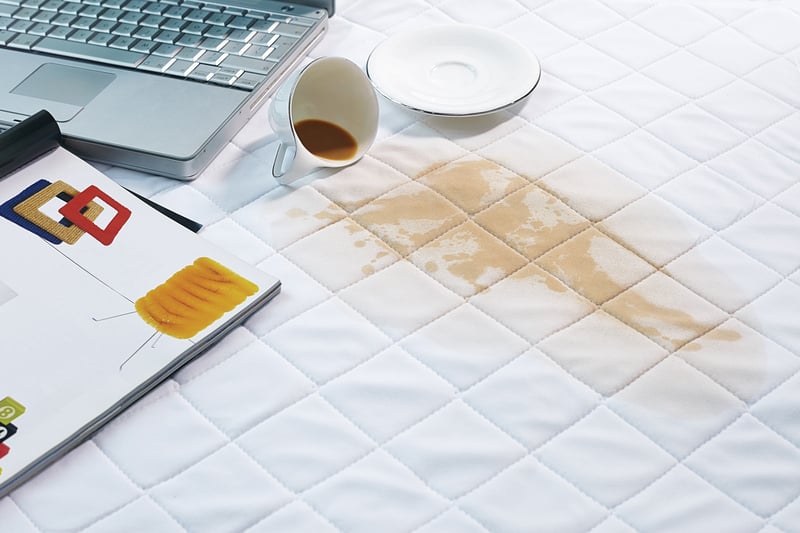Guide to Tile Floor Cleaning
Posted on 18/01/2025
Tile floors can add a beautifully elegant touch to any room, whether it's a kitchen, bathroom, living room, or entryway. However, keeping tile floors clean takes some effort and understanding. In this comprehensive guide, we'll cover everything you need to know about tile floor cleaning, from daily maintenance to handling tough stains. By the end of this guide, you'll have the knowledge to keep your tile floors looking clean and gorgeous.
The Importance of Regular Tile Floor Cleaning
Regular cleaning is essential for maintaining the appearance and longevity of your tile floors. Dirt, grime, and spills can accumulate over time, making the floor look dull and potentially causing damage. Moreover, grout lines can trap dirt and become a breeding ground for mold and mildew if not cleaned properly. Regular cleaning prevents these issues and ensures a healthier environment in your home.

Tools You'll Need for Tile Floor Cleaning
Before diving into the cleaning process, it's essential to gather the right tools. Here is a list of supplies you will need:
- Broom or vacuum with a hard floor setting
- Microfiber mop
- Cotton or sponge mop
- Buckets
- Tile and grout cleaner
- Scrub brush
- Old toothbrush for grout lines
- Microfiber cloths
- Neutral pH cleaner (for natural stone tiles)
- Protective gloves
Daily Tile Floor Cleaning Routine
A daily cleaning routine can prevent dirt and grime from accumulating on your tile floors. Here's a simple daily cleaning routine you can follow:
1. Sweeping or Vacuuming
Start by sweeping or vacuuming your tile floor to remove loose dirt, dust, and debris. Use a broom with soft bristles or a vacuum cleaner with a hard floor setting. Avoid using vacuum attachments with brushes as they can scratch the tile surface.
2. Mopping
Mop your floors with a damp, not wet, microfiber mop. Rinse the mop frequently to avoid spreading dirt. For this daily routine, you can simply use warm water or a mild tile cleaner if needed. Refrain from using too much water as excess moisture can seep into the grout and damage it.
3. Drying
Use a clean, dry microfiber cloth to wipe the floor dry. This step is crucial for preventing water spots and ensuring that no moisture is left on the surface.
Weekly Deep Cleaning of Tile Floors
A deeper cleaning routine is recommended at least once a week to remove any built-up dirt and grime. Follow these steps for a thorough weekly clean:
1. Sweeping or Vacuuming
As with the daily routine, begin by removing loose dirt and debris using a broom or vacuum cleaner.
2. Mopping with Cleaner
Fill a bucket with warm water and add a small amount of tile cleaner. Be sure to follow the manufacturer's instructions for the correct dilution ratio. Mop the floor using a cotton or sponge mop and be sure to frequently rinse the mop in the cleaning solution.
3. Scrubbing Grout Lines
Grout tends to collect a lot of dirt and can become discolored. Use a small scrub brush or an old toothbrush with a mixture of water and tile cleaner to scrub the grout lines. For stubborn stains, you can use a baking soda paste or a specialized grout cleaner.
4. Rinsing
Empty the bucket and fill it with clean, warm water. Mop the floor again with just the water to remove any residue from the cleaning solution.
5. Drying
Dry the floor with a clean, dry microfiber cloth or towel. This not only prevents water spots but also ensures no moisture remains.
Dealing with Tough Stains
Despite regular cleaning, tile floors can sometimes develop tough stains. Here are some common stains and how to remove them:
1. Grease Stains
For grease stains, sprinkle baking soda over the stained area and let it sit for a few minutes. Then, scrub with a damp cloth or sponge and rinse with clean water.
2. Coffee or Tea Stains
Apply a mixture of hydrogen peroxide and a small amount of dish soap to the stain. Let it sit for a few minutes, then scrub with a soft brush and rinse thoroughly.
3. Mold and Mildew
Use a mixture of equal parts water and white vinegar to spray the affected area. Let it sit for about 10 minutes, then scrub with a brush and rinse with clean water.
4. Ink or Dye Stains
Dampen a cloth with rubbing alcohol and gently blot the stain. Avoid rubbing, as this can spread the ink. Rinse the area with clean water once the stain is removed.
5. Rust Stains
Sprinkle a commercial rust remover or a mixture of equal parts lemon juice and borax onto the stain. Let it sit for a few minutes, then scrub and rinse thoroughly.

Handling Natural Stone Tile Floors
Natural stone tiles, such as marble, granite, or travertine, require special care. These tiles are more porous and can be easily damaged by acidic cleaners. Here are some tips for cleaning natural stone tiles:
1. Use a pH-neutral Cleaner
Always use a pH-neutral cleaner designed specifically for natural stone tiles. Avoid using vinegar, lemon juice, or any acidic cleaners as they can etch the surface.
2. Avoid Scrubbing
Do not use abrasive scrub brushes or pads on natural stone tiles. Instead, use a soft microfiber cloth or mop to avoid scratching the surface.
3. Seal the Tile
Natural stone tiles should be sealed periodically to prevent stains and moisture from penetrating the surface. Follow the manufacturer's recommendations for re-sealing intervals and products.
Conclusion
Maintaining clean tile floors is essential not only for aesthetic reasons but also for the longevity and healthiness of your living space. By following a consistent cleaning routine, using the right tools and cleaners, and addressing stains promptly, you can keep your tile floors in excellent condition. Whether you have ceramic, porcelain, or natural stone tiles, this guide provides you with all the necessary information to ensure your floors always look pristine.







